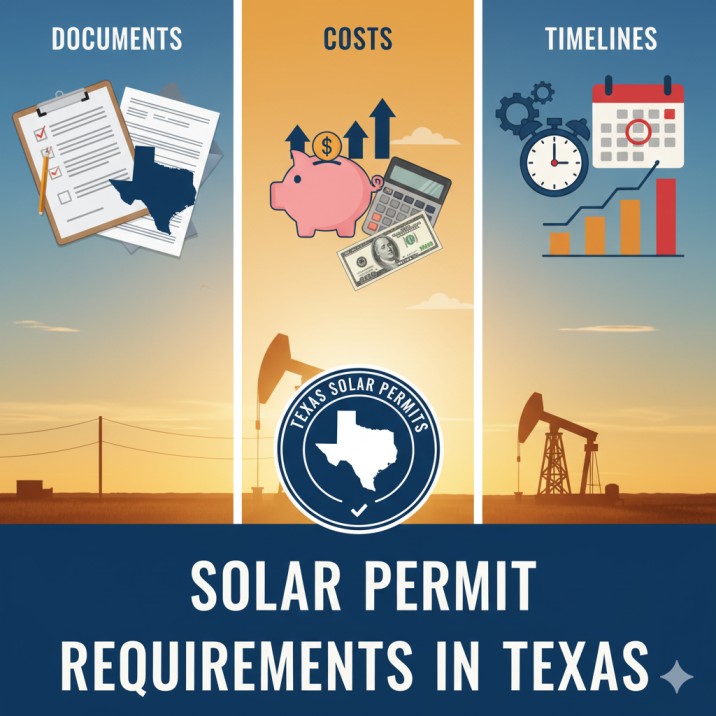
If you live in Texas and want to add solar panels to your home or business, there’s one thing you can’t skip – getting a permit. The solar permitting process in Texas makes sure your solar panels are safe, built the right way, and connected properly to the grid.
Don’t worry, it may sound complicated, but the steps are pretty clear once you know them. Let’s walk through what documents you need, how much it costs, and how long it usually takes.
Why Do You Need a Solar Permit in Texas?
Think of a permit like a green light from your city or county. It says, “Yes, your solar system is safe and good to go.” Without it, you could face:
- Problems when selling your house
- Issues with insurance claims
- Trouble getting rebates or net metering
In short, permits protect you and make sure your solar energy system in Texas works safely for years to come.
What Documents Do You Need?
When you apply for solar permits in Texas, you usually need to share some basic paperwork. Every city has its own rules, but here’s the common list:
- Application form – your project details
- Site plan – where the panels will sit on your roof or land
- Electrical diagram – how the system will be wired
- Structural report – proof your roof can hold the panels
- Installer license info – the contractor’s license and insurance
- Fire safety plan – so firefighters can still access the roof if needed
Most solar companies take care of this for you, but it’s good to know what’s happening.
How Much Do Solar Permits Cost?
The cost depends on where you live in Texas. On average:
- Homes (residential solar installations in Texas): $150 – $500
- Businesses (commercial systems): $500 to several thousand dollars
Some cities like Austin and San Antonio publish fee charts, while others base it on the system size.
How Long Does It Take?
The timeline also depends on where you live and how big your system is:
- Residential projects: usually 3–10 business days
- Commercial projects: can take 2–6 weeks, since they need more reviews and utility approvals
If your paperwork is complete, things move faster. Missing documents cause the most delays.
Step-by-Step: Solar Permitting Process in Texas
Here’s the journey in simple steps:
- Submit application – your contractor usually does this.
- Plan review – the city or county checks everything.
- Approval – once approved, you can start installation.
- Installation – the panels and equipment get set up.
- Inspection – an inspector makes sure it matches the approved plan.
- Utility connection – your system is switched on and starts making clean energy.
Tips to Keep It Smooth
- Double-check all documents before submission.
- Work with an installer who knows local rules.
- Ask if online applications are available (many Texas cities offer this).
- Plan ahead, especially for larger commercial projects.
Quick FAQs
Q: Do all Texas cities require solar permits?
Yes, but the rules and costs change from place to place.
Q: Can I file the application myself?
You can, but most people let their installer handle it.
Q: Does permitting affect solar incentives?
Yes, you need approved permits to qualify for rebates or net metering.
Q: How are commercial permits different?
They take longer, cost more, and need extra engineering reports.
Final Thoughts
The solar permitting process in Texas may feel like a bit of paperwork, but it’s there for good reasons – safety, legality, and peace of mind. For homeowners, the process is quick and simple. For businesses, it takes more time, but it ensures everything is done the right way.
If you’re planning solar installations in Texas, just remember: permits first, panels second. With the right documents, a little patience, and a trusted installer, you’ll soon be enjoying the power of the Texas sun on your very own roof.

